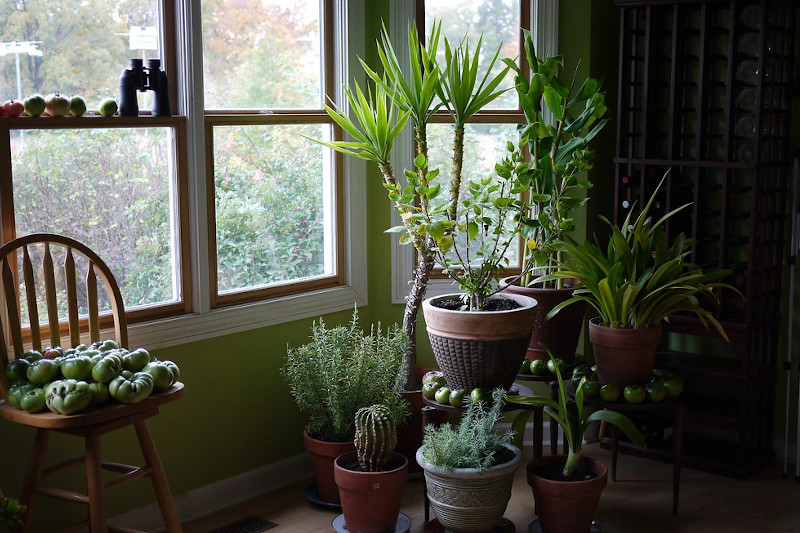
Bringing real plants into your home may feel like a big commitment, but if you’re buying ones that fit together with your lifestyle, you’ll be pleasantly surprised that you can thrive as a plant parent.
Whether you’re completely redecorating your house or you just want to add more nature into your home, make sure you know what type of environment you’re working in before you dive into deciding which are the best indoor plants for you. It is important to consider how much light your space gets and what the humidity levels are. A lot of times your house plants will tell you what they need, you just need to pay attention to their soil and leaves.
If you’re looking for the best plants for beginners, aka you’re looking for something indestructible, take this as a home renovation guide. We consulted with the plant experts to find out which plants are the best in low-light or under neglect, perfect for indoor living, and whether they are pet-friendly or not.
Related Guides
Sansevieria Plant
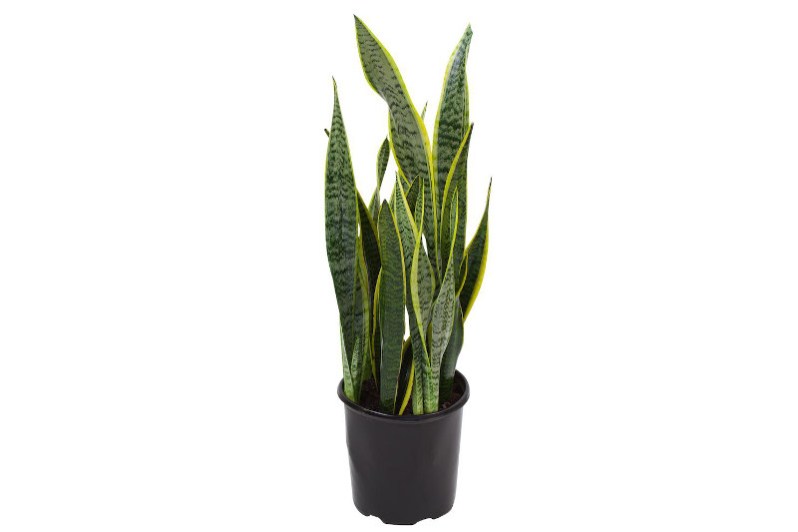
One of the most popular plants that are almost impossible to kill and pretty much thrives everywhere and anywhere is no doubt the Sansevieria Plant, also known as the snake plant. While the name might scare you, the low maintenance of this house plant will not. This hearty plant doesn’t require much water or light, which kind of makes it the best house plant if you have a low-light apartment or have a habit of forgetting to water your plants.
I can attest to this. I unintentionally left my apartment for six months during the beginning of the pandemic and my snake plant was probably only watered twice by friends. Eight months later, it was the only house plant that survived and we have been reunited. Once watered, it welcomed me home with new growth and our relationship is stronger than ever.
Pet friendly: Unfortunately, No.
Thirst level: Your Sansevieria does not need much water, and overwatering can cause the plant to rot. Keep the leaves dry when watering and allow the soil to dry in between waterings. To care for this houseplant during the colder seasons, reduce the watering down to once a month.
Bird of Paradise

Known as “the queen of the indoor plant world” if you have a west-facing window with about 4-6 hours of intense bright light, the beautiful and bold Bird of Paradise tree would look great in your space. It’s hardy and does not require too much watering, but loves the sun.
“Since The Bird of Paradise is native to South Africa, it’s used to receiving a lot of light and warmth. It can adapt to a wide spectrum of light conditions, but it will flourish in a sunny spot,” says Mast, a representative of Bloomscape. If it seems too hot in the sun, move it a couple of feet away from the window or hang sheers over the window to protect the plant.
Pet friendly: No
Thirst level: Keep the soil moist, but not soggy during the spring through fall. In the winter, allow two inches of soil to dry out between waterings. The Bird of Paradise cannot handle ‘wet feet,’ meaning its roots should not sit in wet soil. It’s best to keep your Bird of Paradise on the dry side.
Raven ZZ Plant
Justin Hancock, Horticulturist from Costa Farms, loves the Raven ZZ Plant plant for your apartment. With all the best qualities of old-school ZZ, which practically grows anywhere and can go a couple of weeks without water, he loves how the Raven ZZ has hip purple-black foliage.
The foliage starts out lime green and matures to a deep color, which adds a fun pop of depth wherever you put it. If you don’t have any windows or are under harsh lighting conditions (aka fluorescent lighting) such as those in office buildings, you’ll want to pick up one of these mood boosters. The ZZ plant naturally thrives in low humidity and periods of drought.
Pet friendly: No
Thirst level: Minimum. This plant wants to be watered only when the top inch of the soil is dry. Drain any excess water so that it isn’t sitting in any pools. It hates being overly moist or soggy.
Red Prayer Plant
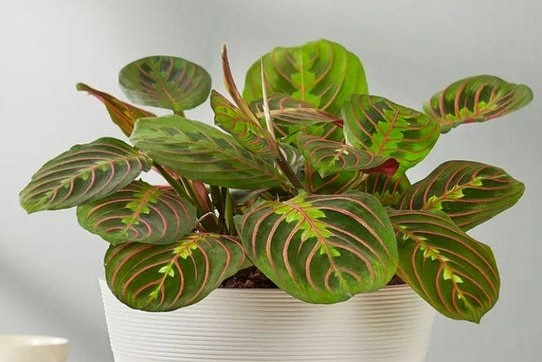
One of Mast’s favorite plants for bringing more than green into your room is the Red Prayer Plant. The Maranta Red Prayer Plant has soft dark green leaves with feathered, painterly centers of light green and red veins.
“The colorful foliage and slow growth make this a perfect plant for window sills, mantles, or shelves that need a splash of color,” she says. The Red Prayer Plant does well in low light but typically prefers indirect sunlight.
Pet friendly: Yes
Thirst level: Keep the soil consistently moist when your Prayer Plant is actively growing in spring and summer, but reduce water from fall through late winter. Your Red Prayer Plant does not like its soil to be too wet, nor too dry. When watering, try to use lukewarm water and make sure to water the soil, not the leaves. Water sitting on the leaves can cause leaf spot bacteria.
Dracaena Dorado
Instantly turn your room into a tropical escape, without the maintenance of common tropical plants. Native to tropical Africa, the Dracaena Dorado is loved for its dramatic and fascinating shape and large, upright growth, Mast explains. It is highly adaptable and very easy to care for, making it suitable for low light conditions.
While it’s quite leafy, it’s also extremely strong. “Its dark green leaves with yellow outlining are naturally shiny and gracefully drape from each of the canes. The canes themselves are quite sturdy, lending an unexpected architectural element to the whimsical foliage,” says Mast. The tall narrow shape lends itself to a corner and smaller living spaces.
Pet friendly: No
Thirst level: Allow the soil to dry out slightly between watering, then water thoroughly until water comes out of the drainage hole at the bottom of the pot. Discard any excess water that has collected in the saucer–your Dracaena Dorado does not like to sit in water. If there are too many yellow leaves that means the plant is too wet, and brown leaves indicate that it’s too dry.
Kimberly Queen Fern
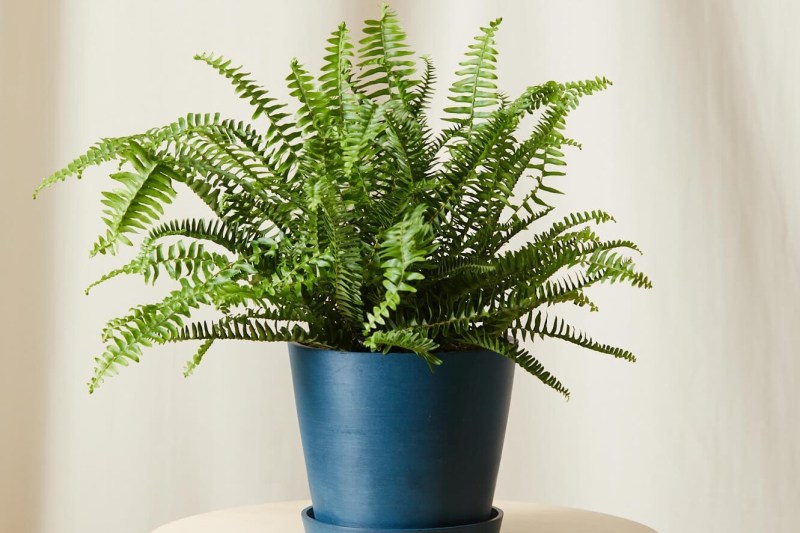
Adding plants to your bathroom is always a good idea. They bring life and color to what’s typically a small space. You just need to make sure they’re moisture-friendly houseplants, which luckily the Kimberly Queen Fern is.
Try putting this small plant behind your toilet or on a stool. Another great way to display it is by hanging it from the ceiling. Mast suggests ferns like the Kimberly Queen Fern, which thrives in extra moisture and can adapt to lower light.
Pet friendly: Yes
Thirst level: Allow the top 2 to 3 inches of soil to dry out before watering. Listen to the plant — the fronds of the fern will become pale green when the plant needs water. Crispy brown fronds, especially in the center of the fern, usually indicate overwatering.
Spider Plant
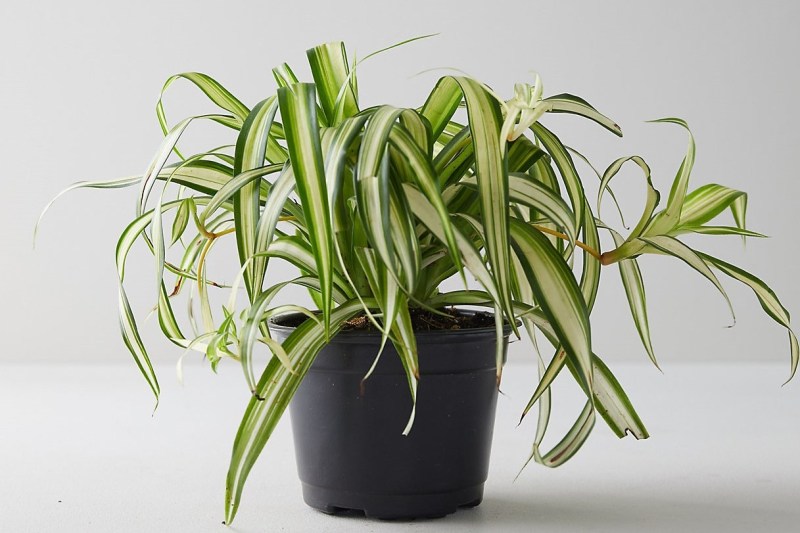
If you’re looking for a great housewarming gift for a new plant parent, the Spider Plant should be your go-to. “This old-school favorite has been a favorite for generations of houseplant lovers,” says Hancock, “since it has an easy-to-grow nature (growing in low, medium, or bright light), tolerates drying out, and produces offshoots that are fun to share with friends and neighbors,” he explains.
Pet friendly: No
Thirst level: When the soil is dry to the touch, you should be watering the snake plant. Don’t overwater, as the Spider plant is susceptible to root rot in soggy conditions. Listen to the leaves, if they start to get droopy, the plant is overwatered.
Network Calathea
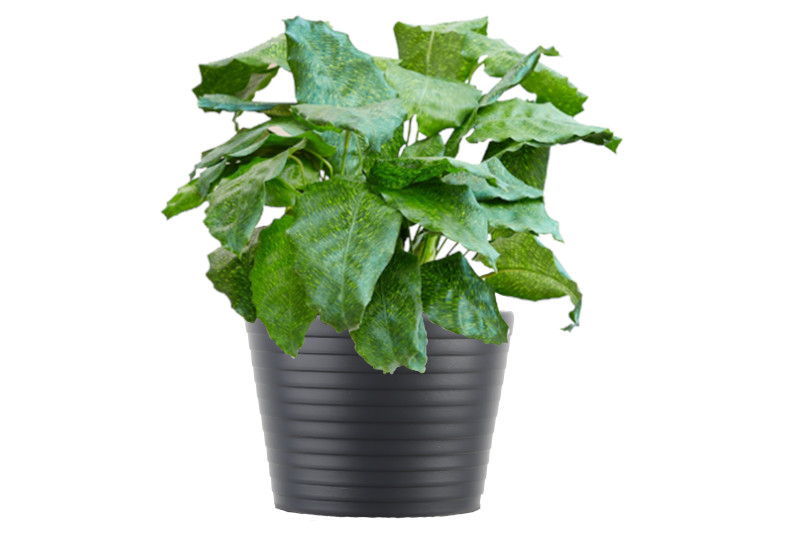
This full and lush Calathea features wildly patterned leaves and is durable indoors, says Hancock. “It tolerates low light, but likes regular watering and appreciates humidity, making it perfect for places like in your kitchen or bathroom,” he says.
Since this plant should avoid direct sunlight, it’s perfect for apartments and indoor spaces that are on the darker side.
Pet friendly: Yes
Thirst level: Check the top 1 to 2 inches of the soil often. If it is dry then your plant is ready to be watered. Look out for browning or yellowing on the leaves, this means the plant is thirsty. Don’t worry, these plants are hardy and can bounce back after a good drink!




